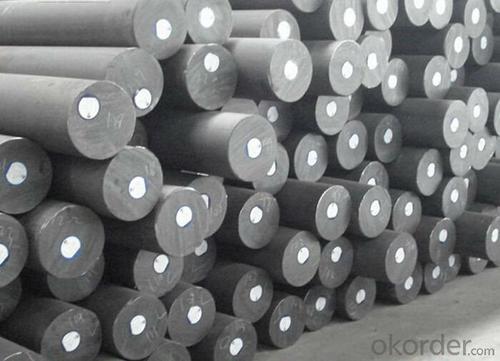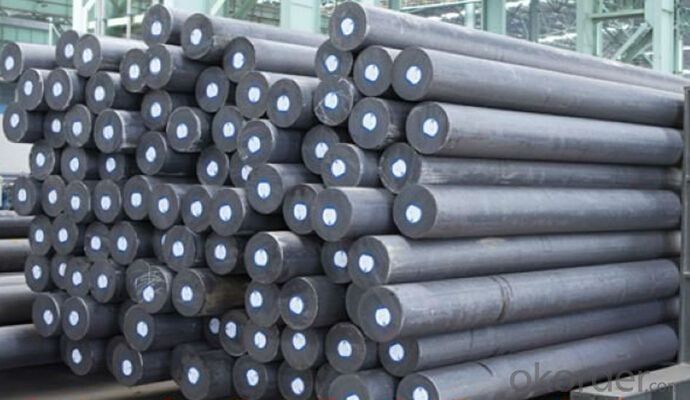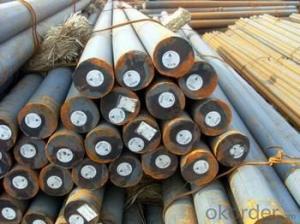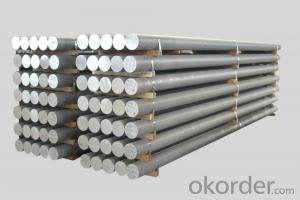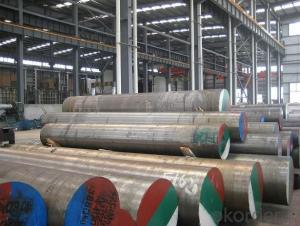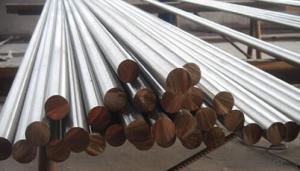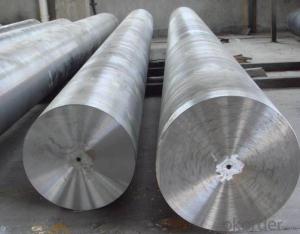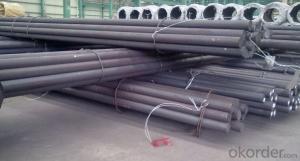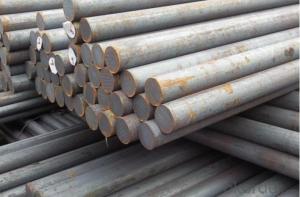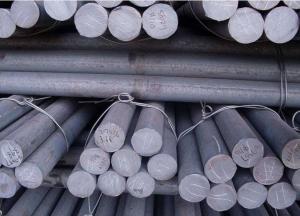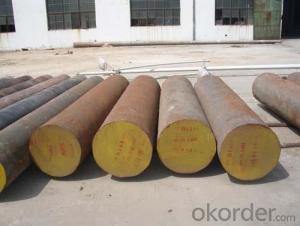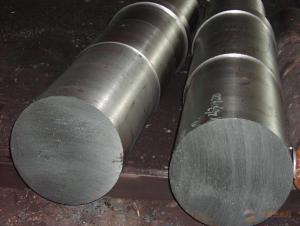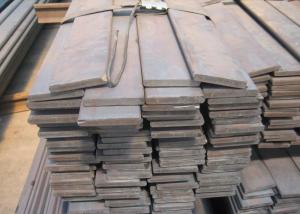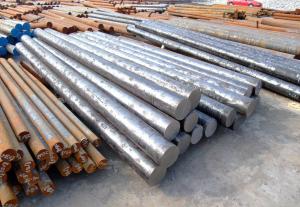Grade AISI 1060 CNBM Carbon Steel Round Bars C60
- Loading Port:
- Shanghai
- Payment Terms:
- TT OR LC
- Min Order Qty:
- 3 m.t.
- Supply Capability:
- 10000 m.t./month
OKorder Service Pledge
OKorder Financial Service
You Might Also Like
Specification
Specifications:
1.Diameter: 10mm - 1200mm
2.Length: Max 12m
4.Tech:EAF,LF,VD,ESR
5. Technique: Hot rolled
Description | Carbon Steel Rod/Carbon Steel Bar,carbon steel rod,carbon steel shaft,mild steel bar, Mild steel shaft,ms bar | |
Material | ASTM | 1005,1006,1008,1010,1015,1020,1025,1030,1035, |
DIN | Ck10,Ck15,Ck22,Ck25,Ck30,Ck35,Ck40,Ck45,Ck50, 30Mn4,40Mn4 | |
BS | 040A04,095M15,045M10,080A40,045M10,080M50 | |
Standard | GB/T799,ASTM A29,A108,A321,A575,BS970,DIN1652,JIS G4051 | |
Section shape | Round,square,hexagonal,flat,angle | |
Surface | Black painted,galvanized | |
Specifications | Round bar | Diameter: 10mm~1200mm |
Angle bar | Size: 3mm*20mm*20mm~12mm*800mm*800mm | |
Square bar | Size: 4mm*4mm~100mm*100mm | |
Flat bar | Thickness: 2mm~100mm | |
Width:10mm~500mm | ||
Hexagonal | Size: 4mm~800mm | |
Length | 2m,4m,5.8m,6m,11.8m,12m or as required. | |
Chemical Composition:
C | Si | Mn | P | S | Cr | Ni | Cu |
0.47~0.55 | 0.17~0.37 | 0.50~0.80 | ≤0.035 | ≤0.035 | ≤0.15 | ≤0.25 | ≤0.25 |
Usage and Applications:
Mold bottom
Plastic mold
Construction machinery parts
Automobile parts
Security grills
Screens
Construction
Packaging & Delivery:
Packaging Detail: Standard seaworthy packing or as customer required; all goods are packed in bundle with steel strips and shipped by break bulk vessel or container
Delivery Detail: 45 days
Production Flow:
EAF+LF+VD+ Forged+ Heat Treatment
Material prepare (billet) — heat up — rough rolling — precision rolling — cooling — packing — storage and transportation
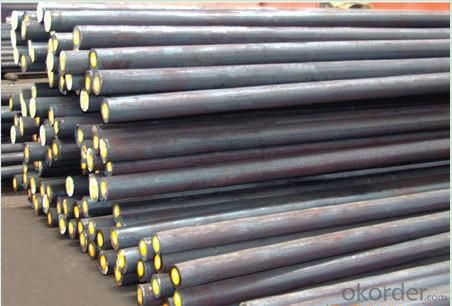
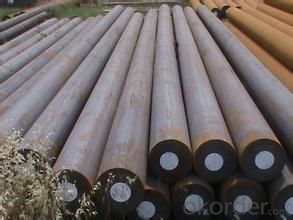
Quality Assurance:
1. We will strictly inspect our production that we sold according to the customer’s request.
2. Our steel reaches international quality standards.
3. Quality should be in conformity with the specification of the manufacturer. Quantity and packing conditions should be in conformity with the term in the contract.
4. Should the packing found damaged, the buyer has the right to claim to the seller
- Q: How does the heat treatment process affect the hardness of special steel?
- The heat treatment process has a significant impact on the hardness of special steel. Heat treatment involves heating the steel to a specific temperature, holding it at that temperature for a certain period, and then cooling it at a controlled rate. This process alters the microstructure of the steel, which in turn affects its hardness. One of the most common heat treatment techniques is quenching, which involves rapid cooling of the steel. Quenching results in the formation of a hard and brittle microstructure called martensite. The rapid cooling prevents the formation of other softer microstructures, such as pearlite or ferrite, and thus increases the hardness of the steel. Another heat treatment process that affects the hardness of special steel is tempering. After quenching, the steel is often tempered to reduce its brittleness and improve its toughness. Tempering involves reheating the quenched steel to a lower temperature and then slowly cooling it. This process allows for the transformation of some of the martensite into a more ductile microstructure, such as tempered martensite or bainite. These microstructures retain some of the hardness of martensite but also provide improved toughness and resistance to fracture. In summary, the heat treatment process significantly affects the hardness of special steel. Quenching increases hardness by forming martensite, while tempering balances hardness with improved toughness. The specific heat treatment parameters, such as temperature and cooling rate, can be adjusted to achieve the desired hardness and mechanical properties for different applications of special steel.
- Q: What are the main applications of special steel in the power transmission industry?
- Special steel is used in various applications within the power transmission industry. Some of the main applications include manufacturing of power transmission line towers, transmission line conductors, and high-voltage insulators. Special steel is also used in the production of power transmission cables, transformers, and other critical components, ensuring efficient and reliable electricity transmission.
- Q: What are the requirements for special steel used in military applications?
- The requirements for special steel used in military applications typically include high strength, toughness, and durability to withstand extreme conditions and heavy impact. It should have excellent resistance to corrosion, wear, and fatigue to ensure long-term performance. The steel must also possess good weldability and machinability for ease of fabrication and maintenance. Additionally, it should meet stringent specifications and standards set by military organizations to ensure reliability, safety, and compatibility with other materials and systems.
- Q: Can special steel be used in renewable energy applications?
- Yes, special steel can be used in renewable energy applications. Special steel alloys such as stainless steel and high-strength low-alloy (HSLA) steel are commonly used in the manufacturing of wind turbines, solar panels, and hydroelectric power systems. These alloys offer excellent corrosion resistance, high strength, and durability, making them ideal for withstanding harsh environmental conditions and ensuring long-term performance in renewable energy applications.
- Q: How does special steel contribute to the heat resistance of products?
- Special steel contributes to the heat resistance of products by offering superior mechanical properties that allow them to withstand high temperatures without deforming or losing their structural integrity. The unique composition and manufacturing process of special steel result in enhanced heat resistance, making it an ideal material for applications exposed to extreme heat conditions. Special steel is designed to have a high melting point, which means it can endure higher temperatures compared to standard steel. This is achieved by incorporating alloying elements such as chromium, nickel, molybdenum, or vanadium, which improve the steel's ability to withstand heat. These elements form stable oxide layers on the surface of the steel, acting as a barrier against oxidation and preventing the steel from losing strength or becoming brittle when exposed to high temperatures. Furthermore, special steel is often treated with heat-resistant coatings or undergoes specialized heat treatment processes to enhance its heat resistance even further. These treatments can include quenching and tempering, annealing, or precipitation hardening, depending on the specific requirements of the product. These processes alter the steel's microstructure, improving its resistance to thermal fatigue, creep, and thermal shock. The heat resistance provided by special steel allows for the creation of products that can operate in demanding environments such as aerospace, automotive, power generation, and industrial applications. For instance, in the aerospace industry, special steel is used to manufacture components like turbine blades that are exposed to extremely high temperatures in jet engines. In the automotive industry, it is utilized for manufacturing exhaust systems and engine components that need to withstand intense heat from combustion processes. In summary, special steel contributes to the heat resistance of products by offering a higher melting point, improved oxidation resistance, and enhanced mechanical properties that allow them to maintain their structural integrity and functionality even under extreme heat conditions. This makes special steel an essential material for various industries seeking reliable and durable solutions that can withstand high temperatures.
- Q: How is special steel classified?
- Special steel is classified based on its chemical composition, physical properties, and intended use. It can be categorized into various types such as stainless steel, tool steel, alloy steel, and high-speed steel, each designed to meet specific requirements and applications in industries like automotive, aerospace, construction, and manufacturing.
- Q: How does special steel resist wear and abrasion?
- Special steel resists wear and abrasion due to its unique properties and composition. It is typically alloyed with elements like chromium, tungsten, or manganese, which enhance its hardness and toughness. These alloys form a protective layer on the surface of the steel, making it more resistant to scratching, rubbing, and erosion. Special steel also has a fine grain structure, which further contributes to its wear resistance. Additionally, heat treatment processes such as quenching and tempering can be applied to further enhance the steel's hardness and durability, making it highly suitable for applications where wear and abrasion are common.
- Q: How is high-speed tool steel used in the manufacturing of drills and taps?
- High-speed tool steel is commonly used in the manufacturing of drills and taps due to its excellent hardness, wear resistance, and ability to withstand high temperatures. This type of steel is able to retain its hardness at elevated temperatures, making it ideal for cutting tools that generate heat during operation. It enables drills and taps to effectively cut through various materials, including metal and wood, while maintaining their sharpness and durability. Additionally, high-speed tool steel allows for faster cutting speeds and increased productivity in manufacturing processes.
- Q: What are the properties of ultra-high-strength steel?
- Ultra-high-strength steel possesses exceptional mechanical properties, including high tensile strength, excellent toughness, and superior hardness. It typically exhibits a remarkable ability to withstand heavy loads, making it suitable for applications requiring exceptional strength-to-weight ratios. Additionally, ultra-high-strength steel often has good formability, allowing for complex shapes to be manufactured. It is commonly used in sectors such as automotive, aerospace, and construction, where strength and durability are paramount.
- Q: How is special steel protected against corrosion?
- Special steel is protected against corrosion through a variety of methods, including the application of protective coatings such as zinc or epoxy, the use of corrosion-resistant alloys in the steel composition, and the implementation of cathodic protection systems that involve the use of sacrificial anodes or impressed current to prevent rusting.
Send your message to us
Grade AISI 1060 CNBM Carbon Steel Round Bars C60
- Loading Port:
- Shanghai
- Payment Terms:
- TT OR LC
- Min Order Qty:
- 3 m.t.
- Supply Capability:
- 10000 m.t./month
OKorder Service Pledge
OKorder Financial Service
Similar products
Hot products
Hot Searches
Related keywords


